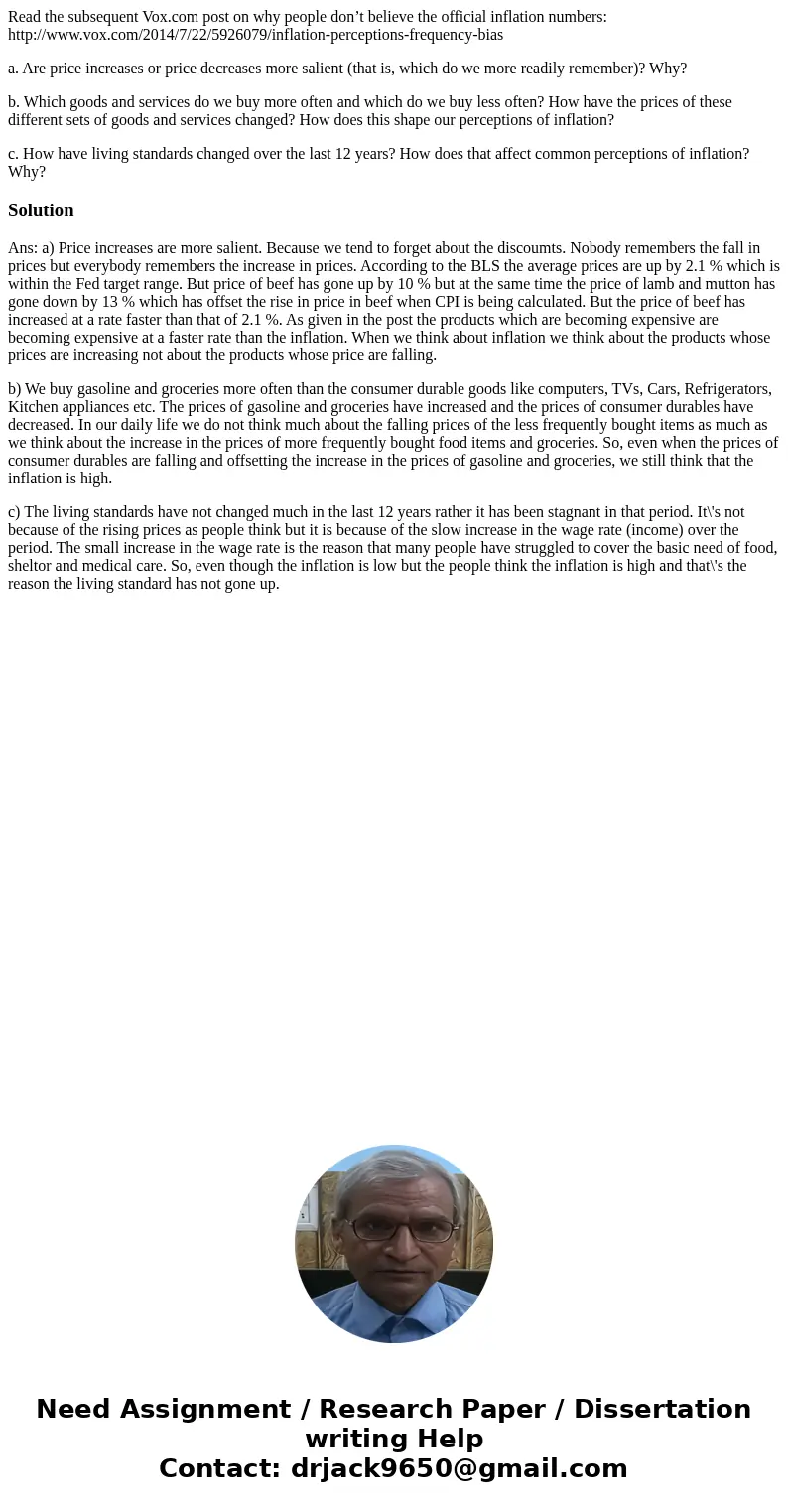Read the subsequent Voxcom post on why people dont believe t
Read the subsequent Vox.com post on why people don’t believe the official inflation numbers: http://www.vox.com/2014/7/22/5926079/inflation-perceptions-frequency-bias
a. Are price increases or price decreases more salient (that is, which do we more readily remember)? Why?
b. Which goods and services do we buy more often and which do we buy less often? How have the prices of these different sets of goods and services changed? How does this shape our perceptions of inflation?
c. How have living standards changed over the last 12 years? How does that affect common perceptions of inflation? Why?
Solution
Ans: a) Price increases are more salient. Because we tend to forget about the discoumts. Nobody remembers the fall in prices but everybody remembers the increase in prices. According to the BLS the average prices are up by 2.1 % which is within the Fed target range. But price of beef has gone up by 10 % but at the same time the price of lamb and mutton has gone down by 13 % which has offset the rise in price in beef when CPI is being calculated. But the price of beef has increased at a rate faster than that of 2.1 %. As given in the post the products which are becoming expensive are becoming expensive at a faster rate than the inflation. When we think about inflation we think about the products whose prices are increasing not about the products whose price are falling.
b) We buy gasoline and groceries more often than the consumer durable goods like computers, TVs, Cars, Refrigerators, Kitchen appliances etc. The prices of gasoline and groceries have increased and the prices of consumer durables have decreased. In our daily life we do not think much about the falling prices of the less frequently bought items as much as we think about the increase in the prices of more frequently bought food items and groceries. So, even when the prices of consumer durables are falling and offsetting the increase in the prices of gasoline and groceries, we still think that the inflation is high.
c) The living standards have not changed much in the last 12 years rather it has been stagnant in that period. It\'s not because of the rising prices as people think but it is because of the slow increase in the wage rate (income) over the period. The small increase in the wage rate is the reason that many people have struggled to cover the basic need of food, sheltor and medical care. So, even though the inflation is low but the people think the inflation is high and that\'s the reason the living standard has not gone up.

 Homework Sourse
Homework Sourse